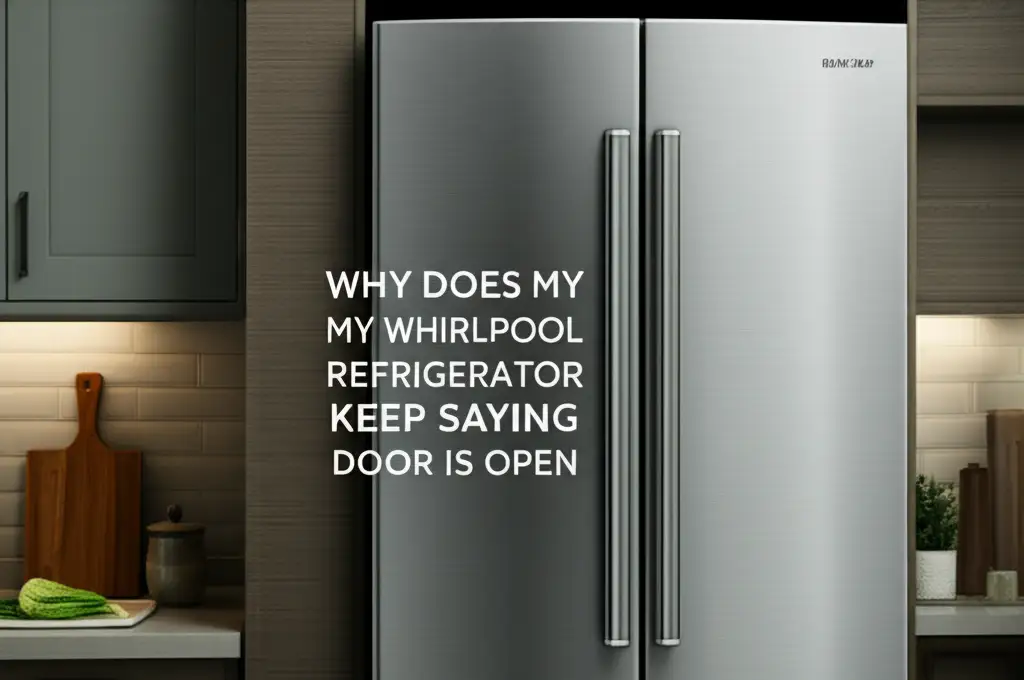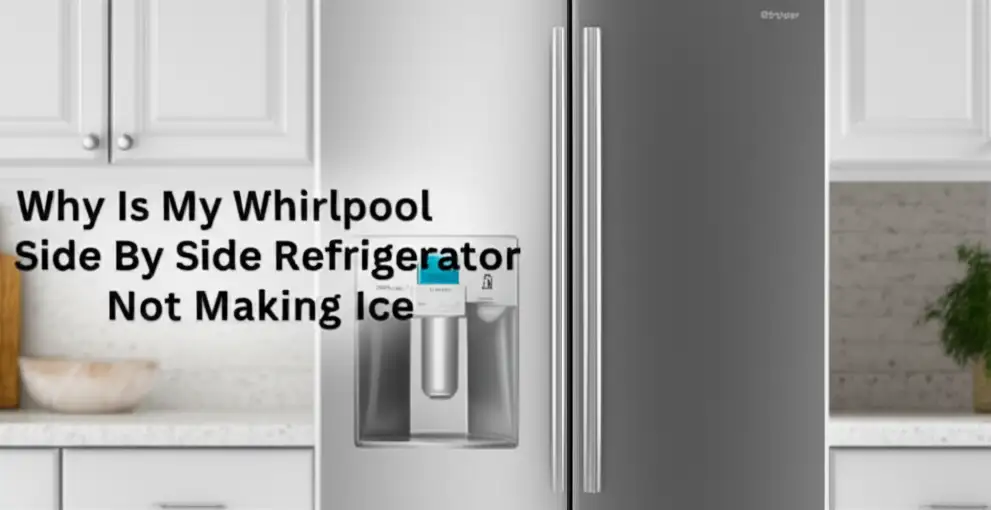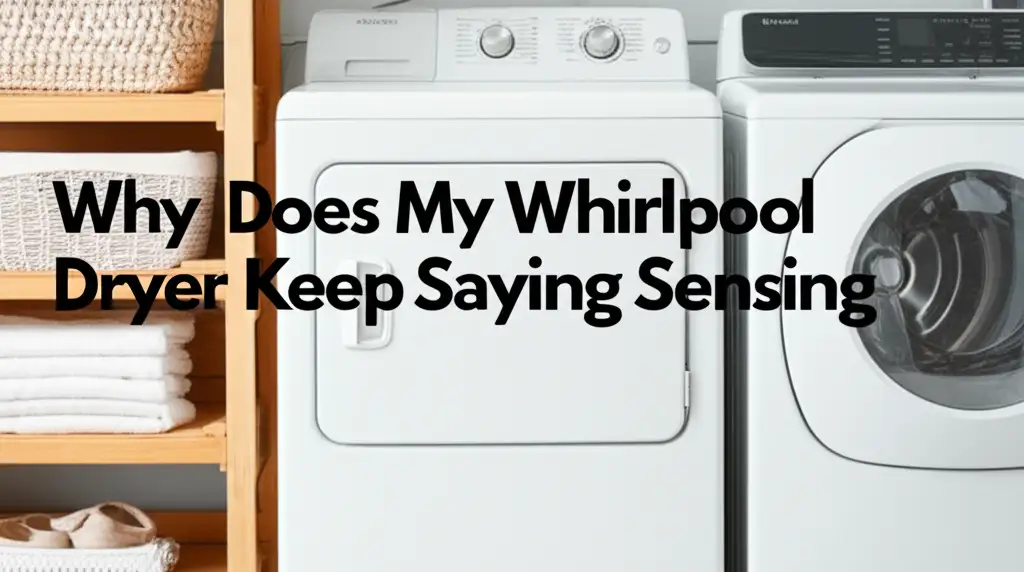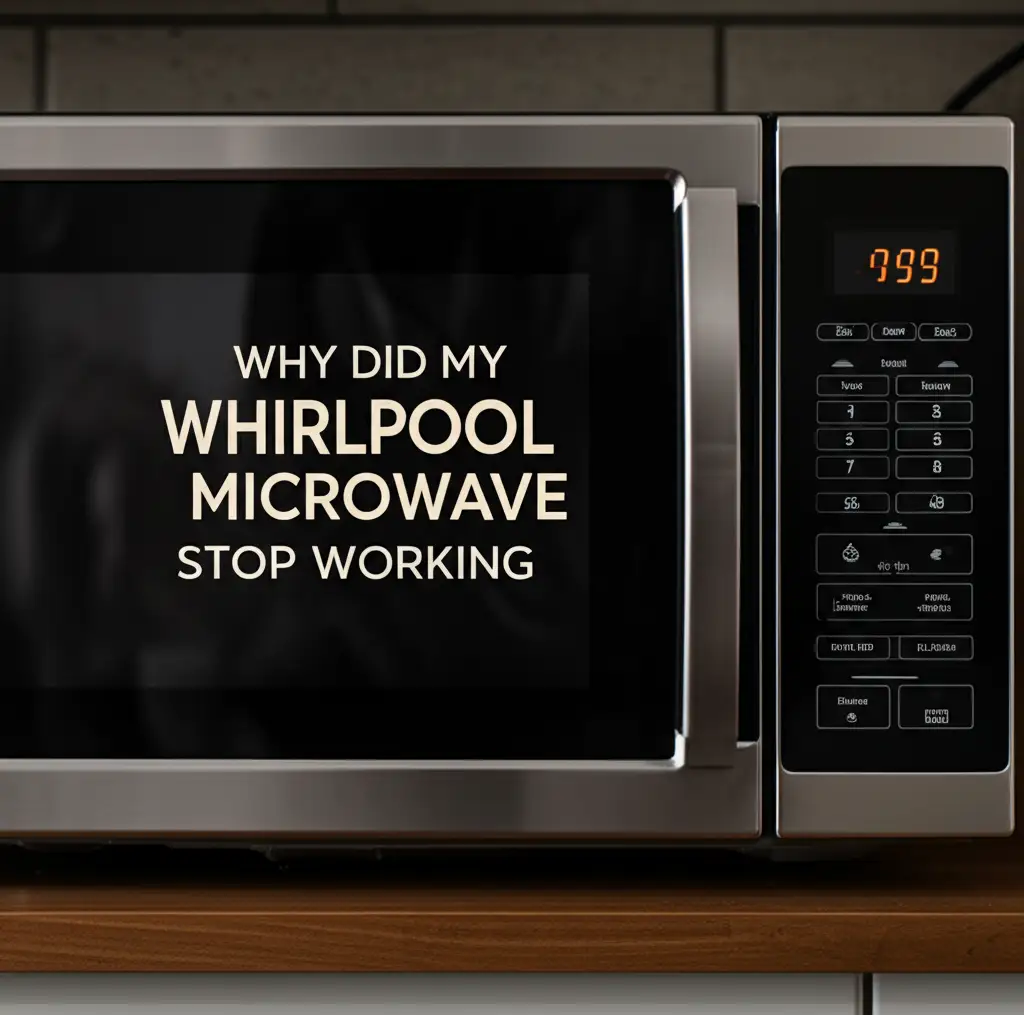· Katria Melrose · Appliance Repair · 14 min read
Why Is My Kitchenaid Refrigerator Not Getting Cold But Freezer Works

Why Your KitchenAid Refrigerator Isn’t Cooling But Freezer Works
It is a common source of frustration when you open your KitchenAid refrigerator and find it warm, even though the freezer compartment feels perfectly cold. This situation suggests a specific issue, not a total system failure. Your KitchenAid refrigerator is not getting cold but the freezer works, indicating a problem with air circulation, defrosting, or component function.
This guide helps you understand why your KitchenAid fridge struggles to cool while the freezer performs well. We explore the most common culprits, from blocked air vents to faulty fan motors and defrost systems. You will learn practical troubleshooting steps to diagnose the problem. We also provide clear solutions to restore your refrigerator’s proper cooling. My goal is to help you get your KitchenAid appliance back to optimal performance.
Takeaway
When your KitchenAid refrigerator is warm but the freezer is cold, consider these key steps:
- Inspect and Clear Air Vents: Remove any obstructions blocking the airflow between the freezer and refrigerator.
- Check Fan Motors: Listen for the evaporator fan in the freezer and the condenser fan near the compressor.
- Evaluate the Defrost System: Look for excessive ice buildup on the freezer’s back panel, suggesting a defrost issue.
- Test Door Seals: Ensure the refrigerator door seals create a tight closure to prevent warm air entry.
- Clean Condenser Coils: Dust and debris on the coils reduce cooling efficiency and need regular cleaning.
A KitchenAid refrigerator not getting cold while the freezer works often points to issues with the defrost system, evaporator fan motor, damper control, or dirty condenser coils. These components prevent cold air from properly circulating from the freezer into the refrigerator compartment, causing a temperature imbalance.
Understanding Your KitchenAid Refrigerator’s Cooling System
Your KitchenAid refrigerator uses a simple but effective cooling system. A compressor circulates refrigerant, which absorbs heat from inside the fridge and freezer. This process turns the refrigerant into a gas. It then moves to the condenser coils, where it releases heat and turns back into a liquid. The liquid then flows through the evaporator coils inside the freezer. These coils get very cold, chilling the air around them.
The freezer is typically the primary cooling zone. Cold air generated in the freezer needs to move into the refrigerator compartment. This movement happens through a system of vents and a damper. The evaporator fan motor, located in the freezer, plays a critical role. It pushes the cold air over the evaporator coils and then circulates it into both compartments.
If any part of this integrated system fails or becomes obstructed, the freezer can remain cold while the refrigerator warms up. For instance, a fan not spinning will keep cold air from reaching the food compartment. Understanding this airflow is the first step in diagnosing why your KitchenAid refrigerator is not getting cold but freezer works. My KitchenAid fridge relies on these specific components working together.
Addressing Blocked Air Vents in Your KitchenAid Fridge
One of the simplest reasons your KitchenAid refrigerator is not cooling is blocked air vents. Cold air moves from the freezer compartment into the refrigerator through specific vents. If these vents are obstructed, cold air cannot reach the fridge section, even if the freezer is working perfectly. I have seen this issue many times.
Common culprits for blocked vents include large food items, containers, or even ice buildup. Sometimes, pushing items too far back in the freezer can cover the intake vent. Similarly, items in the refrigerator can block the output vent. It is important to regularly check these areas.
To check for blocked vents, start by unloading both your freezer and refrigerator. Look for small openings, usually at the back of the freezer and towards the top of the refrigerator compartment. Ensure no food packaging or ice is blocking them. If you find ice, it might indicate a larger defrost issue, which we will discuss later. Simply rearranging items can often solve this problem. Make sure there is enough space around all your stored food for air to circulate freely. Proper air circulation is crucial for your KitchenAid refrigerator’s performance.
Investigating the Evaporator Fan Motor (Freezer Fan)
The evaporator fan motor is a crucial component in your KitchenAid refrigerator’s cooling process. This fan is located inside the freezer compartment, typically behind a panel. Its job is to draw air over the very cold evaporator coils and then blow that chilled air throughout the freezer. More importantly, it also pushes cold air into the refrigerator section through the connecting vents. If this fan stops working, the freezer can stay cold because the coils are still chilling, but the cold air never reaches your refrigerator compartment.
You might notice a problem with the evaporator fan if your KitchenAid refrigerator is warm, but the freezer feels cold. Listen closely for the fan operating when the refrigerator is running. If you hear no sound coming from the freezer, the fan motor might be faulty. Sometimes, ice buildup can obstruct the fan blades, preventing them from spinning. In other cases, the motor itself can burn out.
To inspect the evaporator fan, you usually need to empty the freezer and remove the back panel. Look for any ice blocking the fan blades. You can carefully chip away ice or use a hairdryer on a low setting to melt it. If there is no ice, try manually spinning the fan blades. If they do not spin freely, or if the motor does not turn on when power is applied, you likely need a new evaporator fan motor. Replacing this part often resolves the issue of a KitchenAid refrigerator not getting cold while the freezer works. For similar cooling issues in other brands, you can also check out resources like Why is my GE Refrigerator not cooling but the freezer is working.
Checking the Damper Control Assembly
The damper control assembly is another key component that can cause your KitchenAid refrigerator to be warm while the freezer remains cold. This small, often plastic, part acts like a gate between the freezer and refrigerator compartments. Its main purpose is to regulate the flow of cold air into the fresh food section. It opens and closes based on the temperature settings you select for your refrigerator. This maintains the desired coldness in your fridge without over-cooling it.
If the damper gets stuck in a closed position, cold air from the freezer cannot flow into the refrigerator. This results in a warm fresh food compartment. Conversely, if it gets stuck open, the refrigerator might become too cold, or the freezer might struggle to maintain its temperature if cold air is constantly escaping. Mechanical failure, a build-up of debris, or even minor ice formation can cause the damper to stick.
To inspect the damper, you will typically find it located at the top back of the refrigerator compartment, where the cold air enters from the freezer. You may need to remove a plastic cover to access it. Visually check if it is stuck. You can also try to manually move it. If it does not move freely or appears damaged, it may need replacement. A faulty damper is a common reason why your KitchenAid refrigerator is not getting cold but freezer works. Many side-by-side refrigerators, including Samsung models, face similar damper issues when their fresh food compartment is not cooling properly. If you own a side-by-side unit, you might find valuable insights by exploring Why is my Samsung Side by Side Refrigerator Not Getting Cold.
Troubleshooting the Defrost System (Defrost Heater, Thermostat, Timer)
A common reason a KitchenAid refrigerator is not getting cold, but the freezer works, relates to a malfunctioning defrost system. Your freezer’s evaporator coils naturally accumulate frost over time. The defrost system prevents this frost from becoming a thick layer of ice. Too much ice can block the airflow vents. It also acts as an insulator, stopping the coils from cooling effectively.
The defrost system consists of several key parts:
- Defrost Heater: This electric heater melts the frost off the evaporator coils.
- Defrost Thermostat (or Bi-Metal Thermostat): This component senses the temperature of the evaporator coils. It turns on the defrost heater when the coils are too cold and shuts it off when the ice has melted.
- Defrost Timer (or Adaptive Defrost Control Board): This timer or control board initiates the defrost cycle at regular intervals.
If any of these components fail, ice will build up excessively on the evaporator coils. This ice blocks the evaporator fan from circulating cold air. It also obstructs the vents leading to the fresh food compartment. You might notice visible frost buildup on the back panel inside your freezer. This is a clear sign of a defrost system issue.
To troubleshoot, you would typically need to unplug the refrigerator and access the evaporator coils in the freezer. Look for heavy ice accumulation. If present, manually defrosting the refrigerator (unplugging it for 24-48 hours with the doors open) can temporarily solve the problem. However, the issue will return if a component is faulty. Testing individual parts like the heater or thermostat with a multimeter can pinpoint the exact failure. This problem is quite common in KitchenAid refrigerators. For more detailed insights on how KitchenAid refrigerators experience similar cooling failures while the freezer remains functional, you can refer to Why is my Kitchenaid Refrigerator not cooling but freezer is fine.
Cleaning Dirty Condenser Coils for Optimal Cooling
Dirty condenser coils are a frequent cause of insufficient cooling in refrigerators, including your KitchenAid unit. The condenser coils are located outside the main cooling compartments, usually at the back or underneath the refrigerator. Their job is to release the heat absorbed from the refrigerator’s interior into the surrounding room. They are crucial for the refrigerant to cool down and effectively cycle through the system.
Over time, dust, pet hair, and debris accumulate on these coils. This layer of grime acts as an insulating blanket. It prevents the coils from efficiently dissipating heat. When the condenser coils cannot release heat properly, the refrigerator’s compressor works harder and longer. This leads to reduced cooling efficiency, especially in the fresh food compartment. The freezer might still maintain its temperature because it is the primary cooling zone. However, the overall cooling power of the unit diminishes. This means your KitchenAid refrigerator is not getting cold but freezer works.
Cleaning the condenser coils is a straightforward maintenance task. First, unplug your KitchenAid refrigerator for safety. If the coils are at the back, you might need to pull the unit away from the wall. If they are underneath, you will typically find a kick plate or grille at the bottom front that can be removed. Use a vacuum cleaner with a brush attachment or a coil brush to carefully remove all dust and debris from the coils and the surrounding area. Perform this cleaning at least once or twice a year to ensure optimal performance. This simple step can significantly improve your refrigerator’s cooling and energy efficiency. Regularly cleaning the area under your refrigerator, where the condenser coils are often located, can help prevent many cooling issues. Learn more about effective cleaning methods at How to clean under a refrigerator. Also, understanding how to maintain and clean coils, including those in the freezer, is crucial for overall appliance health, which you can read about at How to clean freezer coils.
Inspecting Refrigerator Door Seals and Gaskets
Warm air infiltration is a silent culprit behind many refrigerator cooling problems. The door seals, or gaskets, play a critical role in keeping the cold air inside your KitchenAid refrigerator. These flexible rubber or magnetic strips line the perimeter of your refrigerator and freezer doors. They create a tight seal when the doors are closed. If these seals are worn, torn, cracked, or simply not sealing properly, warm ambient air will constantly leak into the fresh food compartment.
When warm air enters the refrigerator, the cooling system works overtime trying to compensate. This makes the compressor run longer and harder, consuming more energy. Despite this effort, the refrigerator compartment struggles to maintain its set temperature. The freezer, being a more insulated and colder zone, might remain unaffected for a longer period. This is why your KitchenAid refrigerator is not getting cold but freezer works.
You can easily test your door seals. Close the refrigerator door on a dollar bill or a piece of paper. If you can pull the paper out easily with little resistance, the seal in that area is weak. Repeat this test all around the door. Also, visually inspect the gaskets for any visible damage or signs of wear. You can clean the gaskets with warm, soapy water to remove any sticky residue that might be preventing a good seal. If the seals are damaged, they can often be replaced. Replacing faulty door seals is a simple yet effective way to improve your KitchenAid refrigerator’s cooling efficiency and prevent food spoilage. General refrigerator cleaning often includes checking and cleaning these seals to ensure optimal performance. You can find more tips on comprehensive appliance maintenance at How to clean the refrigerator.
FAQ Section
Why is my KitchenAid freezer cold but the fridge is warm?
This usually means a problem with cold air circulation or distribution. Common reasons include blocked air vents, a malfunctioning evaporator fan motor, a faulty damper that controls airflow, or ice buildup from a defrost system failure. Dirty condenser coils can also reduce overall cooling power.
How do I reset my KitchenAid refrigerator?
To perform a basic reset, first, locate your refrigerator’s power cord. Unplug the refrigerator from the wall outlet. Wait for about 5-10 minutes to allow the control board to fully discharge. Then, plug the refrigerator back into the outlet. This simple power cycle can sometimes clear minor electronic glitches.
Can I fix a KitchenAid refrigerator not cooling myself?
Many common issues, such as cleaning condenser coils, checking for blocked vents, or even replacing a faulty evaporator fan, can be handled by a DIY enthusiast. However, issues involving refrigerant leaks, sealed system repairs, or complex control board failures often require professional appliance repair technicians due to specialized tools and knowledge.
How often should I clean my KitchenAid refrigerator coils?
You should clean your KitchenAid refrigerator’s condenser coils at least once or twice a year. If you have pets that shed a lot of hair, or live in a dusty environment, cleaning them more frequently (e.g., every 3-6 months) is advisable. Regular cleaning ensures optimal cooling and energy efficiency.
What temperature should my KitchenAid refrigerator be?
The ideal temperature for a KitchenAid refrigerator is typically between 35°F (1.7°C) and 38°F (3.3°C). The freezer compartment should be set to 0°F (-18°C) to ensure proper food preservation. Maintaining these temperatures helps keep your food fresh and safe.
Why does my KitchenAid refrigerator make strange noises?
Strange noises can indicate several issues. A buzzing or humming sound might come from the compressor working hard, especially if coils are dirty. Clicking noises often point to a failing fan motor or a defrost timer. Rattling or vibrating can suggest loose components or items vibrating against the unit.
Conclusion
Discovering that your KitchenAid refrigerator is not getting cold but the freezer works can be confusing and frustrating. However, this common problem usually points to specific internal issues rather than a complete system failure. We have explored the main culprits, including obstructed air vents, a malfunctioning evaporator fan motor, issues with the damper control assembly, and faults within the defrost system. Additionally, dirty condenser coils and leaky door seals can significantly impair your refrigerator’s cooling performance.
By following the troubleshooting steps outlined in this guide, you gain knowledge to diagnose the problem. Often, a simple cleaning of coils or clearing a blocked vent can restore full function. My aim is to help you confidently approach these repairs. Regular maintenance, such as cleaning condenser coils and checking door seals, extends the life of your KitchenAid appliance. If you have performed these checks and your KitchenAid refrigerator still struggles to cool, consider contacting a qualified appliance technician. They can diagnose complex issues and perform professional repairs. Timely action ensures your food stays fresh and your KitchenAid refrigerator operates efficiently for years to come.
- Kitchenaid Refrigerator
- Refrigerator Not Cooling
- Freezer Works
- Refrigerator Troubleshooting
- Appliance Repair
- Fridge Warm
- Cooling Problems





